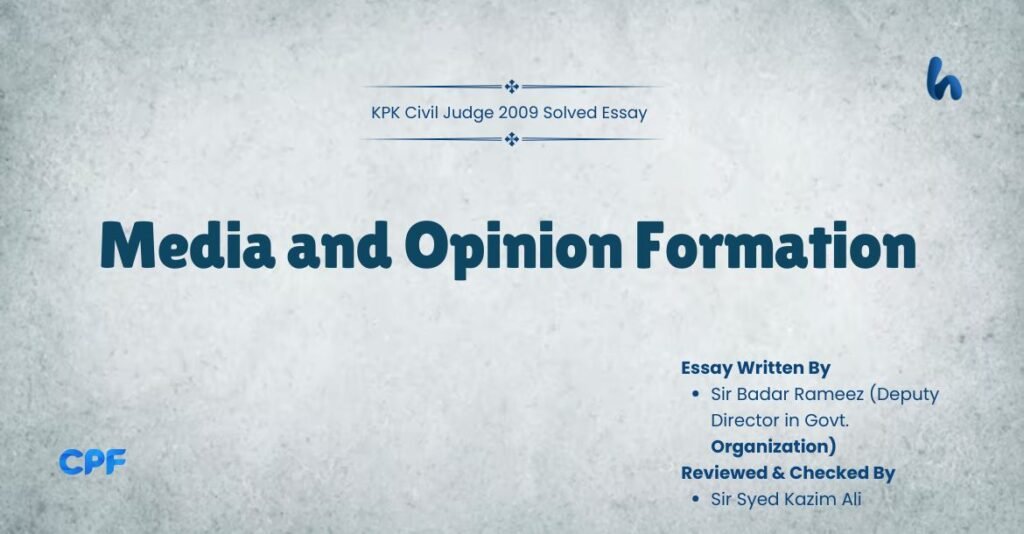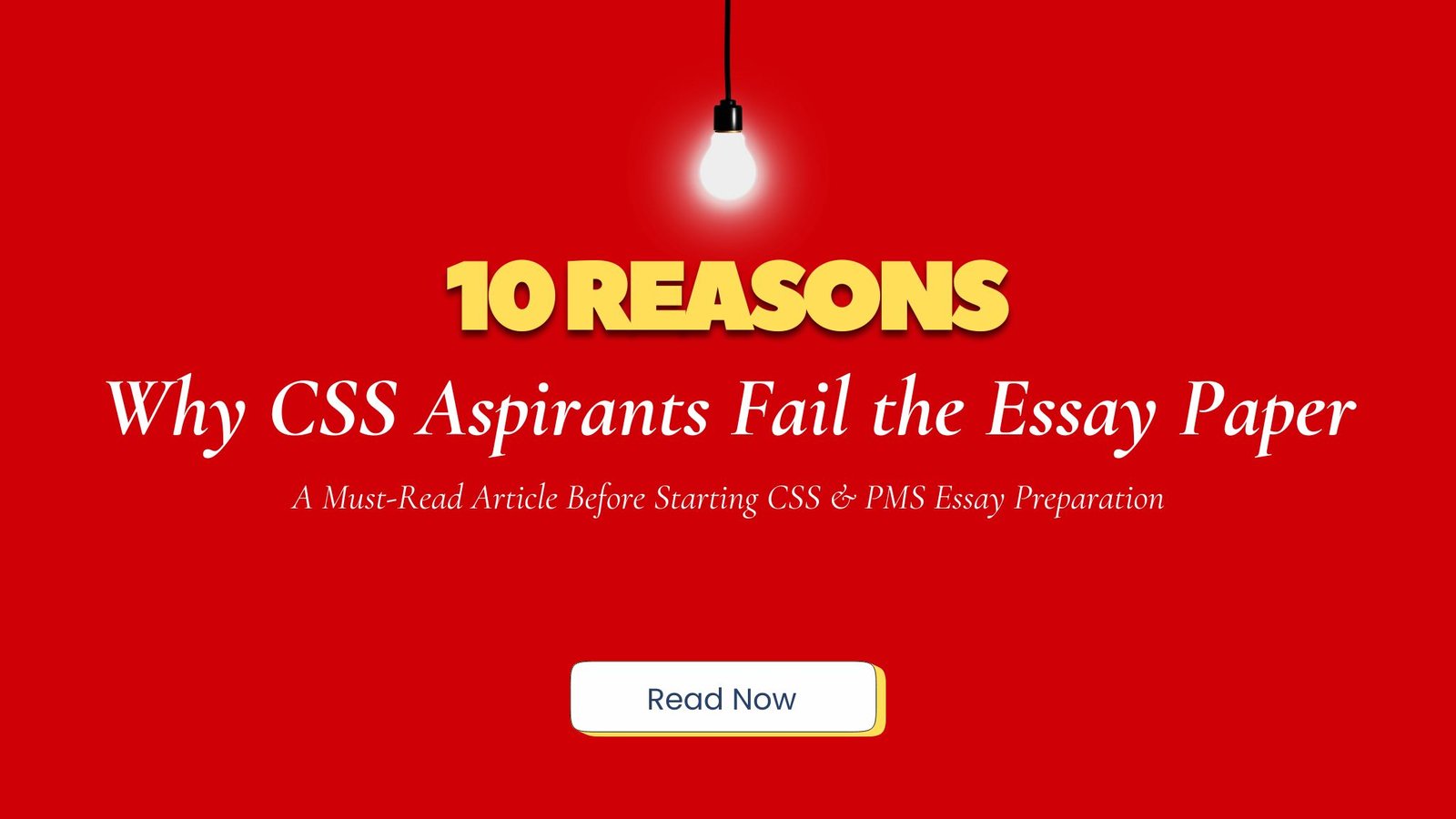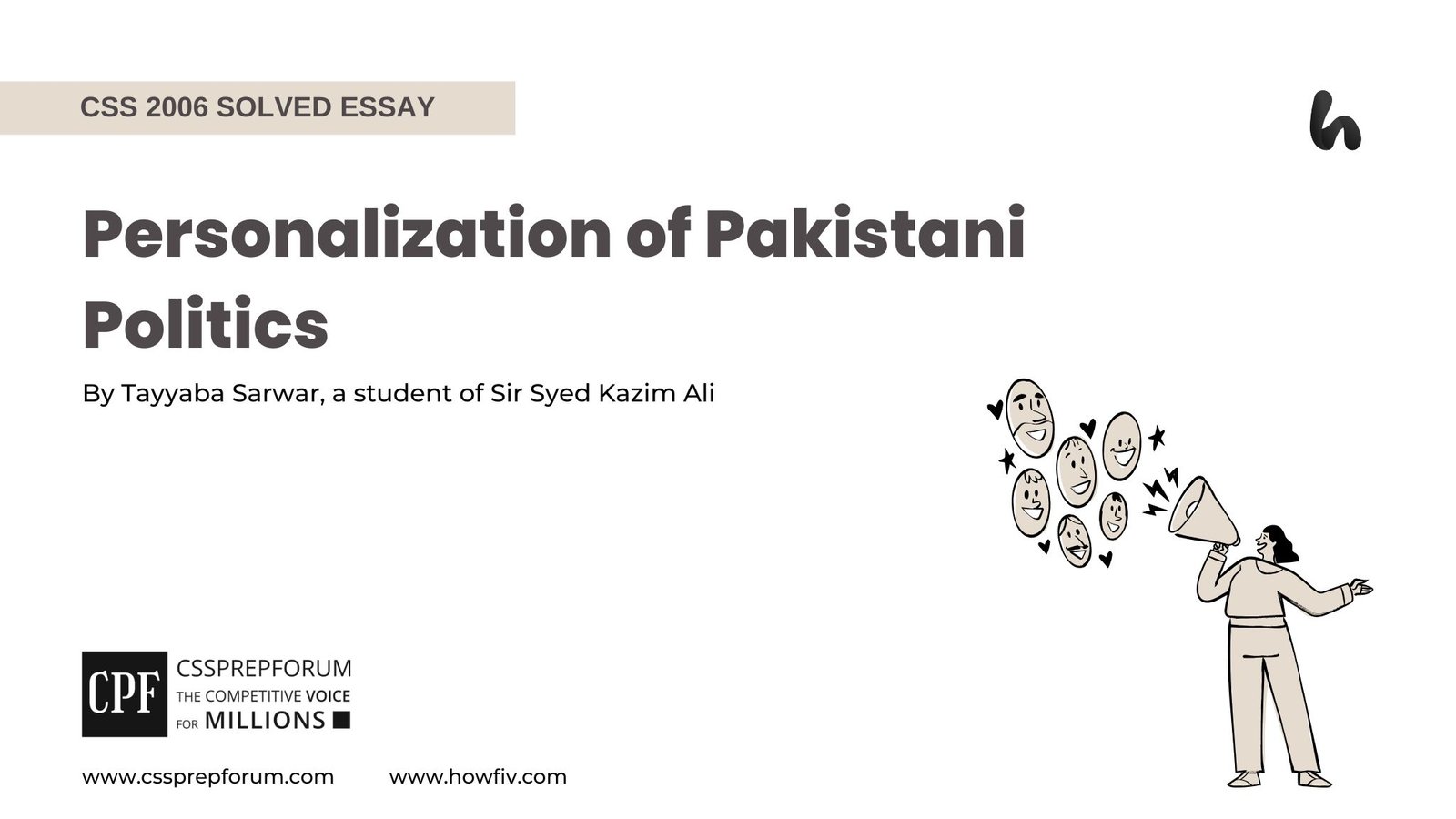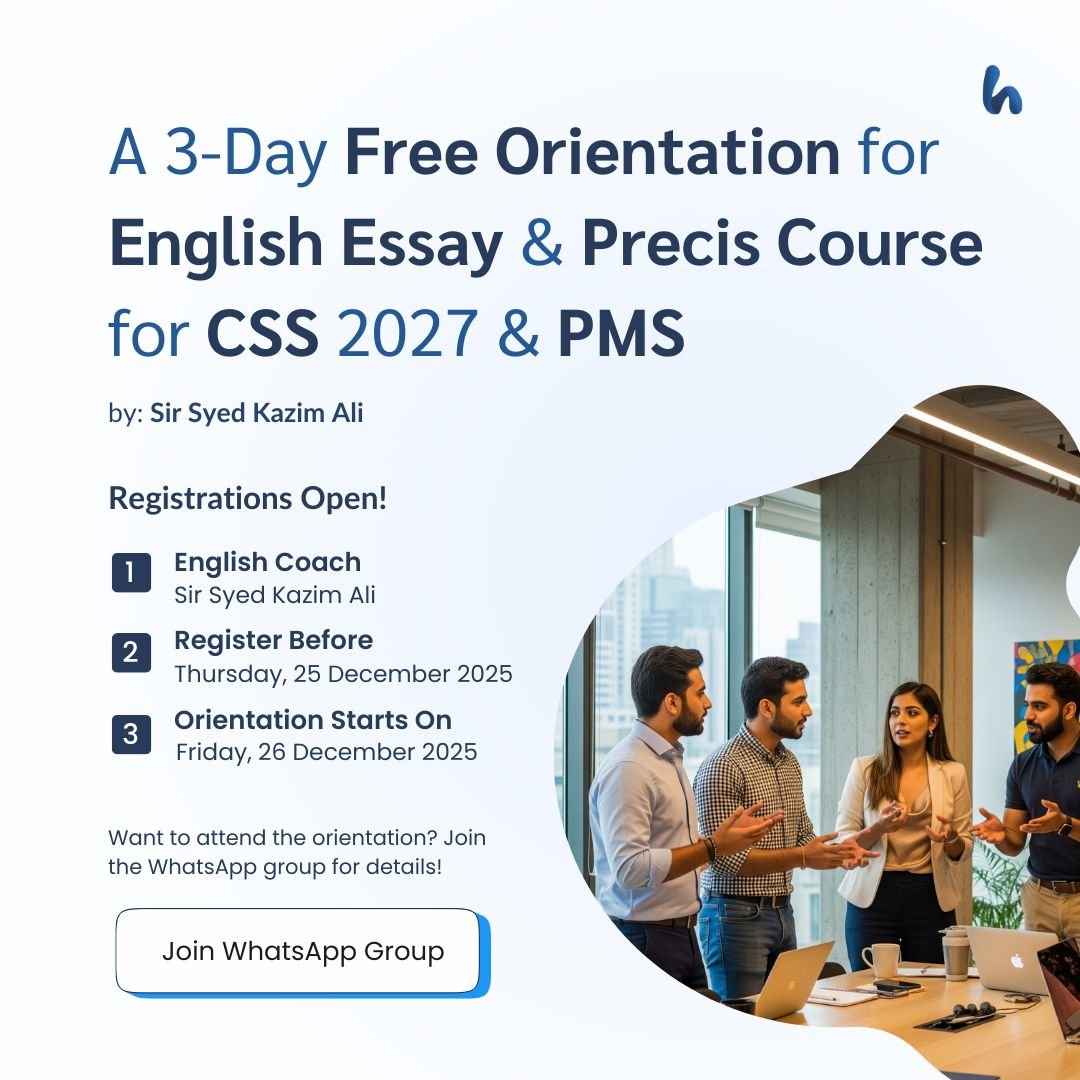Sir Badar Rameez, a Sir Syed Kazim Ali student, has attempted the Civil Judge KPK 2009 Five Paragraph Essay “Media and Opinion Formation“ on the given pattern, which Sir Syed Kazim Ali teaches his students. Sir Syed Kazim Ali has been Pakistan’s top English writing and CSS, PMS essay and precis coach with the highest success rate of his students. The essay is uploaded to help other judiciary and competitive aspirants learn and practice essay writing techniques and patterns to qualify for the essay paper.

Media and Opinion Formation
Outline
1-Introduction
While some argue that individuals form their opinions independently of media influence, the reality is that media plays a crucial role in shaping public opinions, through framing, selective reporting, and biased narratives, media not only influences what people think about but also how they interpret and react to information, often reinforcing ideological divisions and shaping societal discourse.
2-How does media framing shape public opinion?
- Media does not just report facts; it presents them in a specific context that influences public interpretation.
- Evidence: Erving Goffman’s “Framing Theory” argues that media structures reality by shaping the context in which people interpret news and events.
- Media outlets highlight certain stories while ignoring others, influencing what the public sees as important.
- Evidence: A 2021 Reuters Institute study found that 68% of people perceived a news event differently depending on the way it was covered by different media outlets.
3-Is media influence truly as powerful, or do individuals interpret news independently?
- Counterargument: Individuals form opinions based on personal beliefs, education, and critical thinking rather than media influence.
- Refutation: While independent thinking exists, studies show that repeated exposure to certain narratives affects cognitive biases and public sentiment.
4-Conclusion
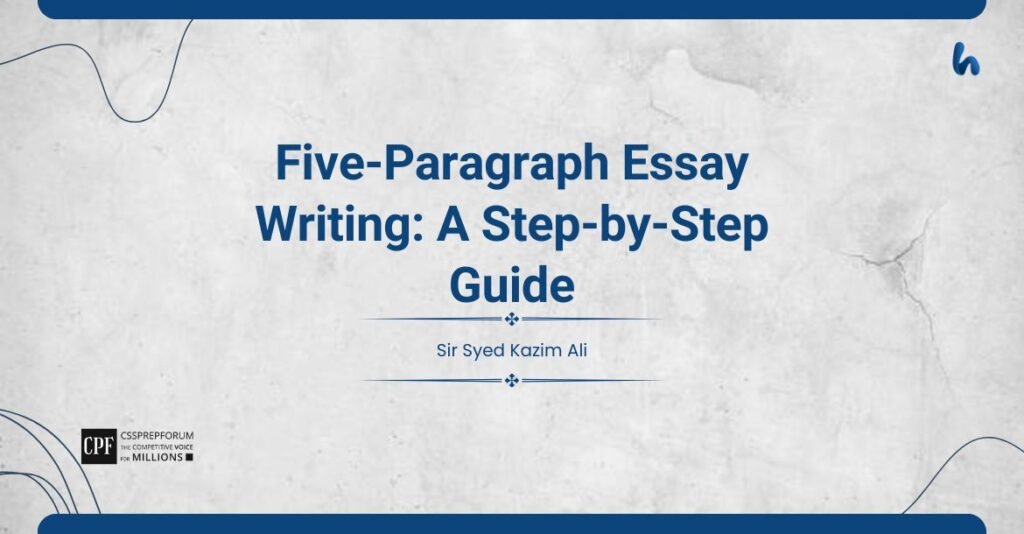
The Essay Begins Below!
Media shapes individuals’ perceptions about political, social, and cultural events. Some argue that people form their opinions independently, guided by personal beliefs, education, and critical thinking rather than media influence. This perspective assumes that individuals possess the ability to critically evaluate information without being swayed by external narratives. However, this view overlooks the subtle yet profound ways media shapes public perception. Through framing, selective reporting, and biased narratives, media influences what people think about and how they interpret and react to information. Ultimately, while independent thought exists, the media’s powerful role in shaping societal discourse and reinforcing ideological divisions cannot be ignored.
To begin with the explanation of the maxim of how media framing shapes public opinion, media does not merely report facts; it presents them within specific contexts that shape how the public interprets events. This framing process influences the way individuals perceive and understand information. And Erving Goffman’s Framing Theory suggests that media structures reality by highlighting certain aspects of a story while downplaying others, thereby guiding the audience’s interpretation. This strategic presentation of information subtly influences emotions, values, and judgments, steering public discourse in specific directions. Thus, media framing goes beyond informing: it actively shapes the cognitive framework through which people process news.
Moreover, media outlets influence public opinion by selectively highlighting certain stories while ignoring others, effectively shaping what society perceives as important. This agenda-setting strategy determines which issues dominate public discourse. A 2021 Reuters Institute study revealed that 68 per cent of people perceived the same news event differently depending on how it was covered by different media outlets, leading to divergent public reactions. Hence, by choosing which stories to amplify and which to downplay, media not only controls the flow of information but also influences the public’s priorities, concerns, and overall worldview. Therefore, this selective reporting subtly molds societal values and opinions over time.
However, despite the evident influence of media framing and selective reporting, some argue that individuals form their opinions independently, guided by personal beliefs, education, and critical thinking. This perspective suggests that people possess the cognitive ability to analyze information critically, question biases, and make informed judgments without being unduly influenced by external narratives. Nevertheless, while independent thinking does exist, numerous studies reveal that repeated exposure to specific narratives can significantly affect cognitive biases and shape public sentiment. Continuous reinforcement of particular ideas makes them seem more credible and familiar. Over time, this subtle influence shapes perceptions and opinions, often without individuals realizing it. Therefore, while critical thinking plays a role, the media’s pervasive presence and repetitive messaging profoundly impact how people interpret and react to information, reinforcing its powerful role in shaping public opinion.
To conclude, while some believe individuals form opinions independently, media significantly shapes public perception through framing, selective reporting, and ideological biases. By presenting information within specific contexts, highlighting certain stories, and reinforcing particular narratives, media influences what people think about and how they interpret events. Although critical thinking and personal beliefs play a role, repeated exposure to media content subtly shapes cognitive biases and public sentiment. In an era of constant media exposure, fostering media literacy and critical thinking is essential to help individuals analyze information critically rather than passively absorbing biased narratives.
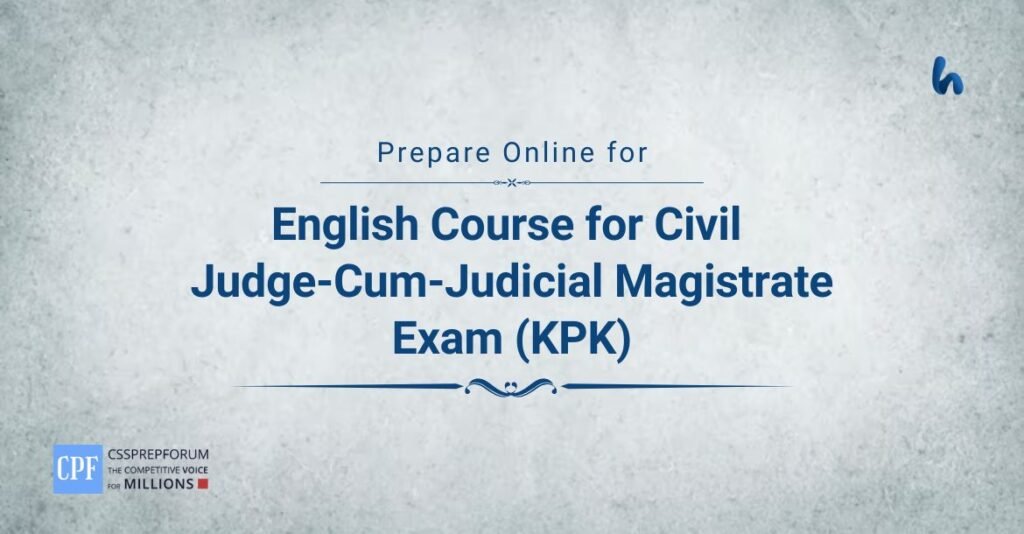
Click on Any to Start Reading
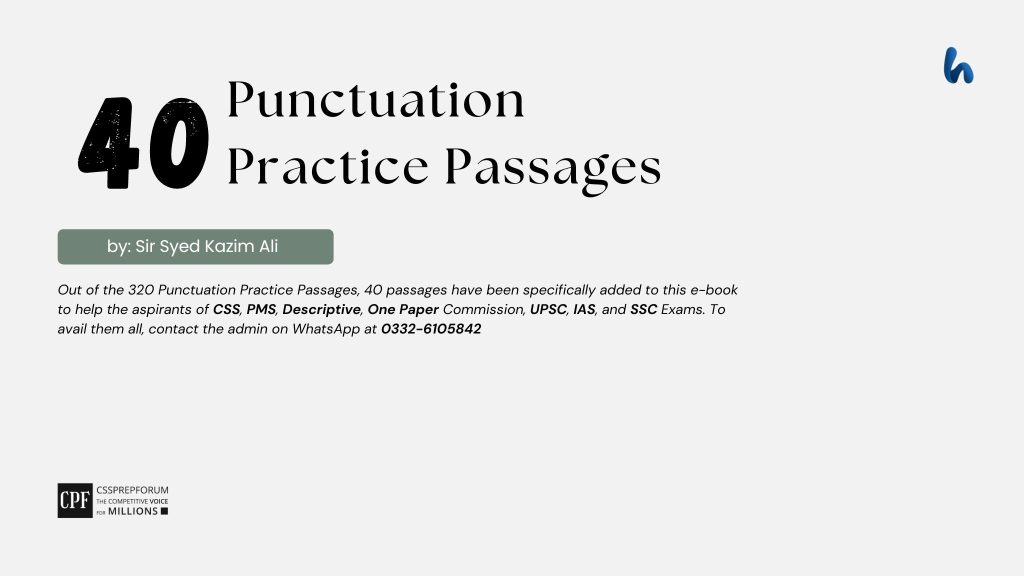
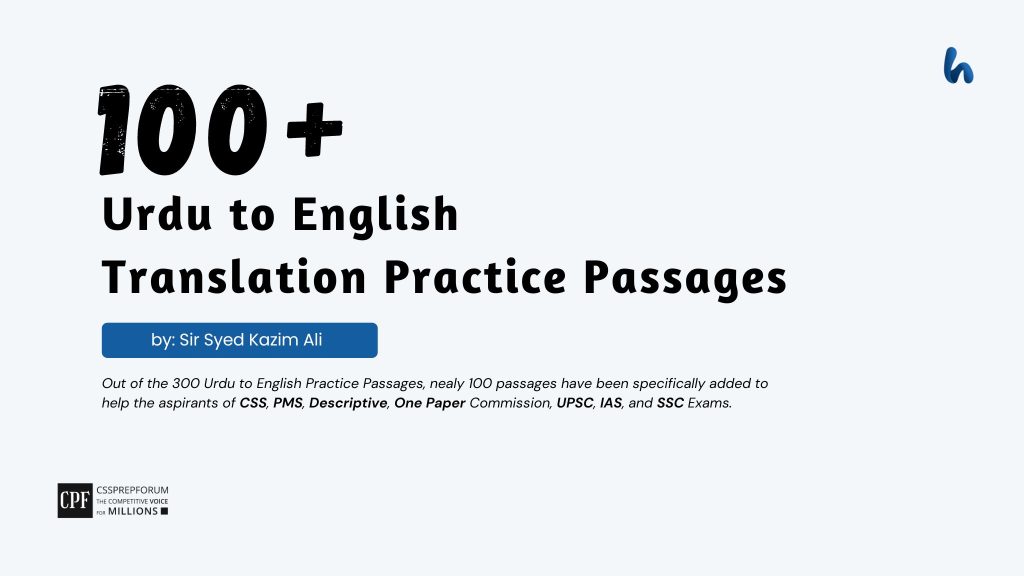
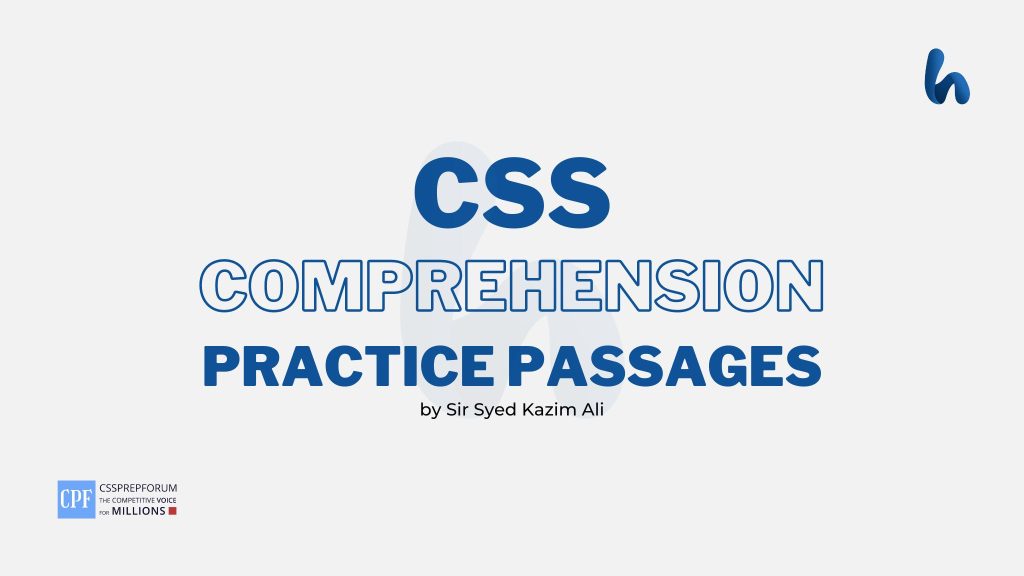
FAQs About Sir Syed Kazim Ali
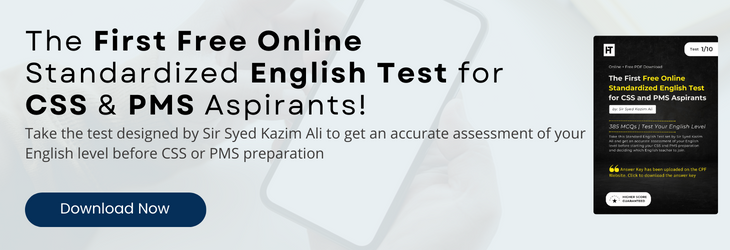
CSS Solved Past Papers’ Essays
Looking for the last ten years of CSS and PMS Solved Essays and want to know how Sir Kazim’s students write and score the highest marks in the essays’ papers? Then, click on the CSS Solved Essays to start reading them.
CSS Solved Essays
CSS Solved General Science & Ability Past Papers
Want to read the last ten years’ General Science & Ability Solved Past Papers to learn how to attempt them and to score high? Let’s click on the link below to read them all freely. All past papers have been solved by Miss Iqra Ali & Dr Nishat Baloch, Pakistan’s top CSS GSA coach having the highest score of their students. General Science & Ability Solved Past Papers

